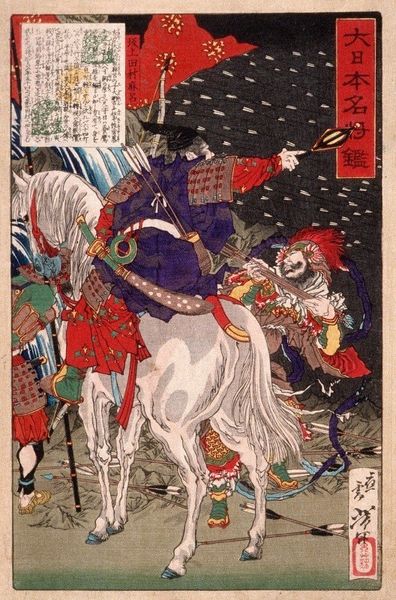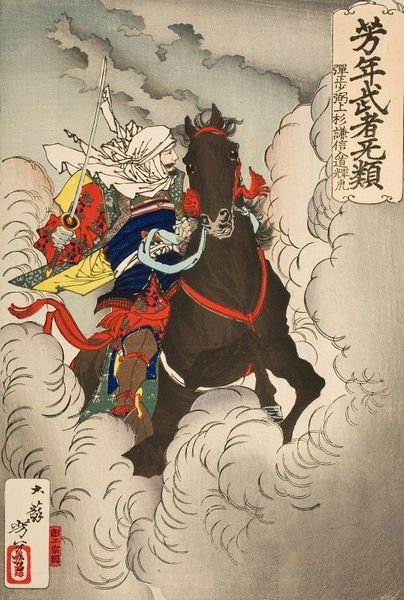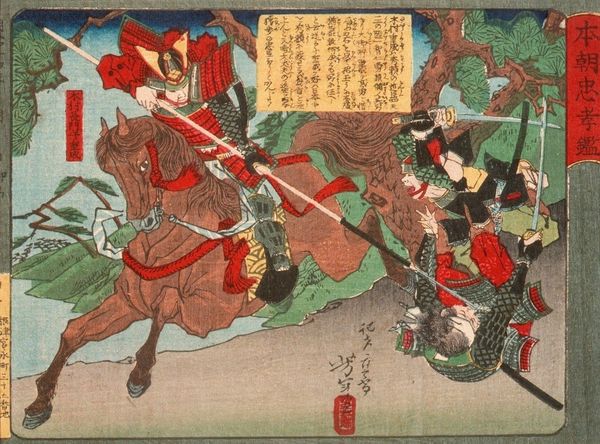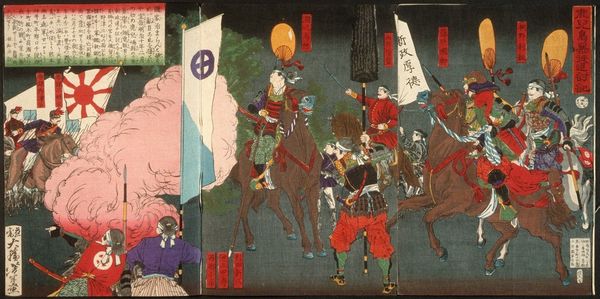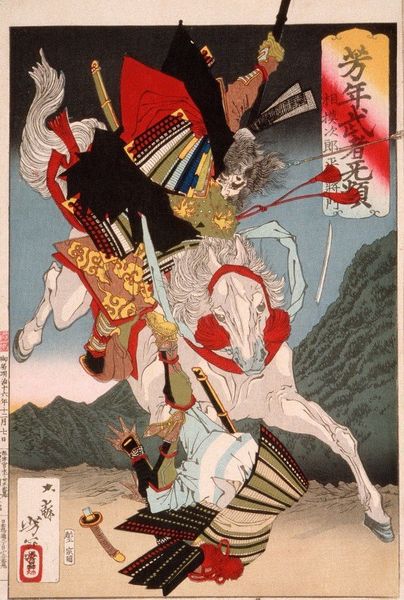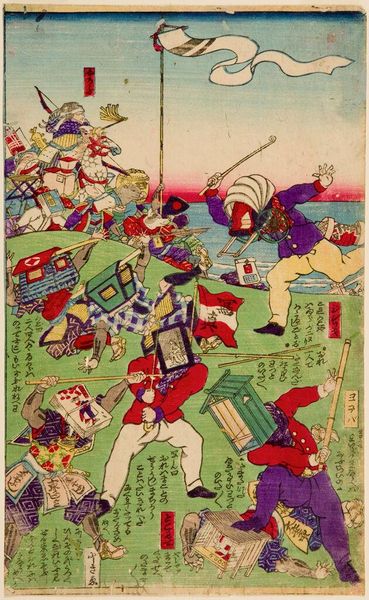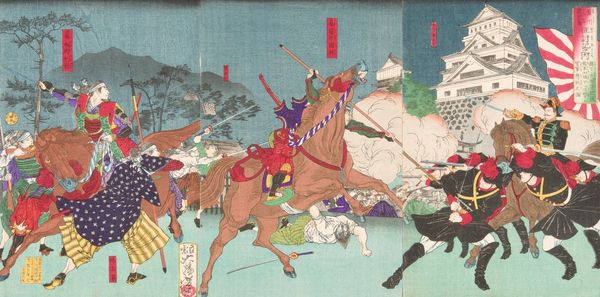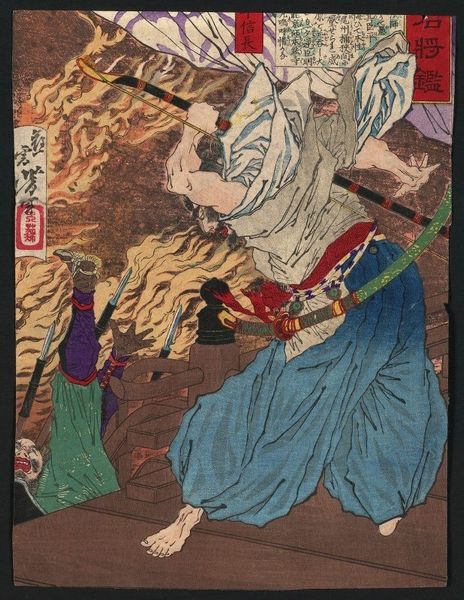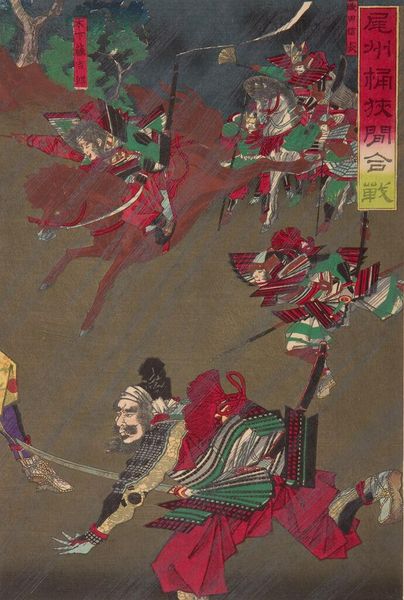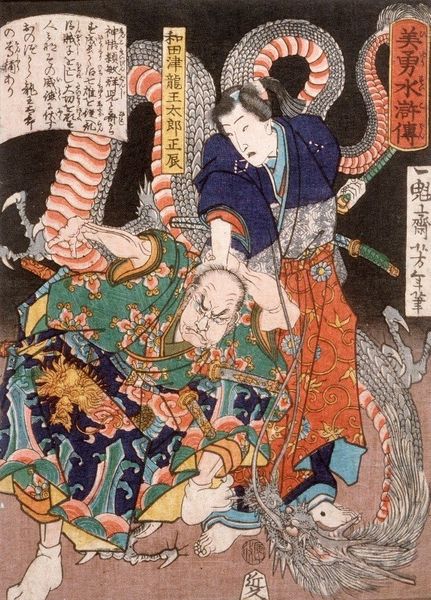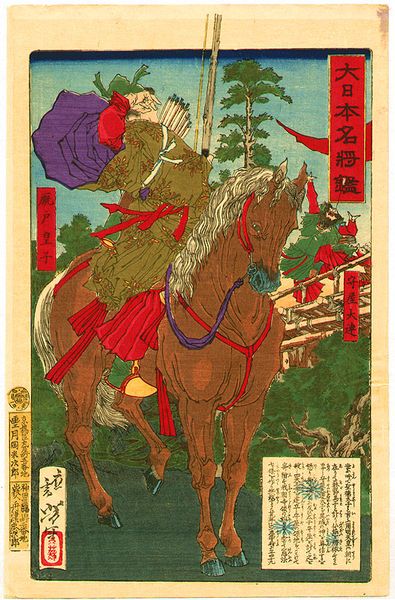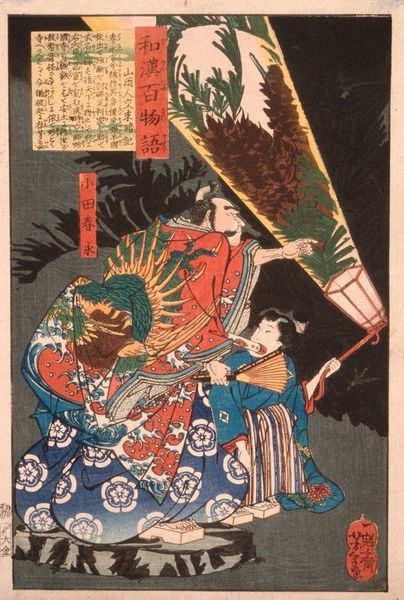
A print depicting Sakanoue no Tamuraro, commanding in the middle of battle 1876
0:00
0:00
Copyright: Public domain
Editor: This print, "A print depicting Sakanoue no Tamuraro, commanding in the middle of battle," was created by Tsukioka Yoshitoshi in 1876. It appears to be a woodblock print on textile, depicting a war scene with text included. I am struck by how active the composition feels and, I am curious: What stands out to you in this piece? Curator: What captures my attention is how this work embodies the socio-political tensions within Meiji-era Japan. We see a woodblock print, a traditional craft, depicting a historical military figure during a period of rapid industrialization and Western influence. Notice the integration of text and image; this reveals the complex literacy practices and dissemination of knowledge characteristic of the time. How does the materiality of the woodblock and textile affect your understanding of the subject matter, compared to, say, a painting on canvas? Editor: It does lend a sense of accessible history; it's like the image could have been more widely distributed than other art forms might allow. The labor involved in creating the print itself speaks to that too. Curator: Exactly. Think about the skilled labor required for the woodblock printing process, the cultivation and weaving of the textile. It directly engages with questions of production and consumption. This work wasn’t made for a rarefied elite, but for a broader public eager to consume narratives of national identity and historical heroism, which, like any other cultural narrative, often papers over other histories and viewpoints. Do you consider this a fine art or an elevated craft? Editor: It definitely blurs those lines for me. Considering the craftsmanship and artistic skill required, it’s more than just a simple craft; it seems to have historical intentions, such as depicting an historical narrative of heroic masculinity, however idealised and potentially problematic. Curator: Precisely. It prompts us to challenge those boundaries between "high" art and "low" craft by centering production. Editor: I now recognize the way the materials themselves, the textile, the print, speak volumes about its original audience and historical context. Curator: Indeed; seeing art through the lens of material production and social context deepens our understanding and appreciation, doesn’t it?
Comments
No comments
Be the first to comment and join the conversation on the ultimate creative platform.
